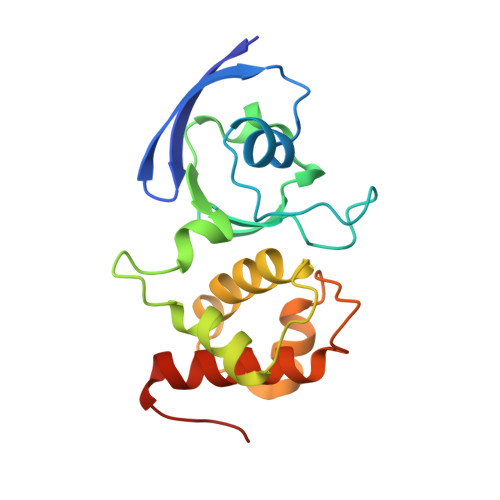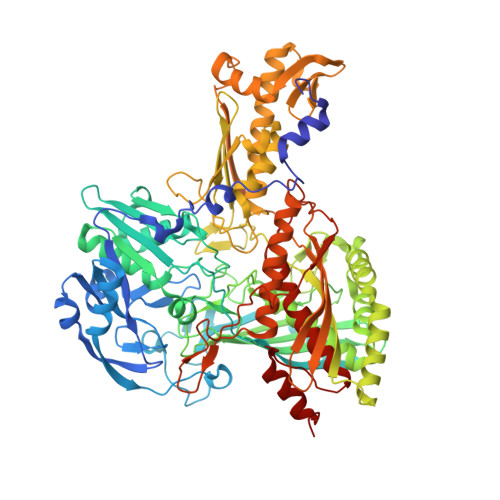Catalysis at a dinuclear [CuSMo(=O)OH] cluster in a CO dehydrogenase resolved at 1.1-A resolution
Dobbek, H., Gremer, L., Kiefersauer, R., Huber, R., Meyer, O.(2002) Proc Natl Acad Sci U S A 99: 15971-15976
- PubMed: 12475995
- DOI: https://doi.org/10.1073/pnas.212640899
- Primary Citation of Related Structures:
1N5W, 1N60, 1N61, 1N62, 1N63 - PubMed Abstract:
The CO dehydrogenase of the eubacterium Oligotropha carboxidovorans is a 277-kDa Mo- and Cu-containing iron-sulfur flavoprotein. Here, the enzyme's active site in the oxidized or reduced state, after inactivation with potassium cyanide or with n-butylisocyanide bound to the active site, has been reinvestigated by multiple wavelength anomalous dispersion measurements at atomic resolution, electron spin resonance spectroscopy, and chemical analyses. We present evidence for a dinuclear heterometal [CuSMoO)OH] cluster in the active site of the oxidized or reduced enzyme, which is prone to cyanolysis. The cluster is coordinated through interactions of the Mo with the dithiolate pyran ring of molybdopterin cytosine dinucleotide and of the Cu with the Sgamma of Cys-388, which is part of the active-site loop VAYRC(388)SFR. The previously reported active-site structure [Dobbek, H., Gremer, L., Meyer, O. & Huber, R. (1999) Proc. Natl. Acad. Sci. USA 96, 8884-8889] of an Mo with three oxygen ligands and an SeH-group bound to the Sgamma atom of Cys-388 could not be confirmed. The structure of CO dehydrogenase with the inhibitor n-butylisocyanide bound has led to a model for the catalytic mechanism of CO oxidation which involves a thiocarbonate-like intermediate state. The dinuclear [CuSMo(O)OH] cluster of CO dehydrogenase establishes a previously uncharacterized class of dinuclear molybdoenzymes containing the pterin cofactor.
Organizational Affiliation:
Abteilung Strukturforschung, Max-Planck-Institut f¨¹r Biochemie, and Proteros Biostructures GmbH, D-82152 Martinsried, Germany Europe. dobbek@biochem.mpg.de





















